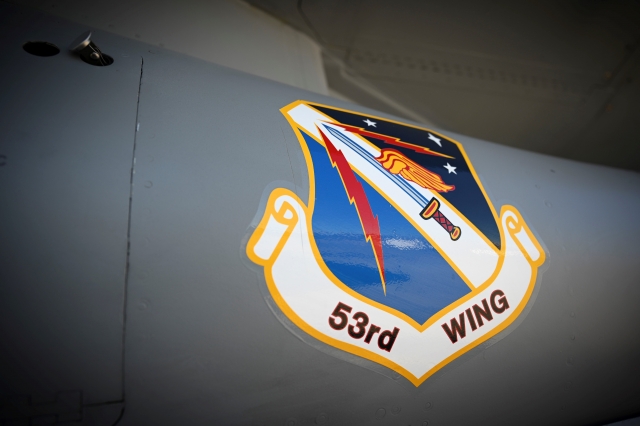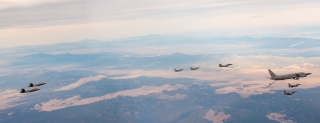USAF and the new Flags, “Accelerate Change or Lose”
5 minute reading about how the USAF is reinventing itself with new doctrines and tactics
On 15 December 2020, commander Air Combat Command (ACC) General Mark D. Kelly signed "COMACC Plan 21". This, effectively formalising the 53rd Wing’s Large Force Test Events (LFTE) into "Black Flag".
Black Flag is an event solely focused on test and tactics development in a realistic, massed force, fully integrated, high threat density environment.
Established as the test counterpart to Red Flag, Black Flag is designed to train like the USAF will fight during wartime operations. While Red Flag builds readiness, Black Flag will build capability.
More Flags
Operational testers have long been tasked with testing in realistic, mass-forced environment. The 53rd Wing proved the effectiveness of the Black Flag concept through recent LFTE's in August and November 2020. As the operational test and tactics development-focused flag event, Black Flag completes a test triad alongside Orange and Emerald Flag. On 12 November 2020 we wrote about the exercise Agile Flag. The latter was a test about the effectiveness of future "Lead Wings". Scramble Magazine has now learned that more Flag exercises will contribute to USAF's "Accelerate Change or Lose" doctrine.
It is expected that Black Flag will accelerate months of work combining it into a high-end LFTE. Because combat is Large Force Employment (LFE), the tests will also include LFE. By definition from the "COMACC Plan 21", Black Flag will be the world’s premier large force tactics and integration test event.
It will enable the Commander Air Force to:
The USAF will adapt its tactics by combining 4th Generation and 5th Generation fighters, bombers, ISTAR and other support aircraft. On 15 December 2020, the Nellis based 422nd Test and Evaluation squadron conducted a Synthetic Aperture Radar (SAR) Map bomb hit assessment test. During this test, two F-15E Strike Eagles dropped live Joint Direct Attack Munitions (JDAMs), while other weapons systems including, F-35A Lightning IIs, F-16C Fighting Falcons, F/A-18s Hornets, RQ-4 Global Hawks, MQ-9 Reapers, U-2S Dragon Ladies and joint partners used SAR Mapping technology to assess if the bombs hit and destroyed the intended targets.
 The objective of the test was to determine the ability and timeline to conduct real time strike assessment using SAR maps. SAR maps allow manned and unmanned platforms to image target areas from long ranges and through weather. It was stated that this test was ultimately designed to find a new way to effectively close the kill chain and confirming destruction of the target. SAR Mapping technology isn’t new technology, but this test has put it to use in a way that can solve an issue for the warfighter in dynamic fights.
The objective of the test was to determine the ability and timeline to conduct real time strike assessment using SAR maps. SAR maps allow manned and unmanned platforms to image target areas from long ranges and through weather. It was stated that this test was ultimately designed to find a new way to effectively close the kill chain and confirming destruction of the target. SAR Mapping technology isn’t new technology, but this test has put it to use in a way that can solve an issue for the warfighter in dynamic fights.
Things will change for the best
Last week we wrote on the inactivation of the 24th Tactical Air Support Squadron on 23 December 2020. This shows that the USAF is willing to adapt. Having used F-16Cs as the primary weapon system, the 24th TASS was the last squadron that used and teached Close Air Support (CAS) the "Old School" manner. Although CAS, defined as air action(s) against enemy/hostile targets that are in proximity to friendly forces, will not change fundamentally, it is expected that by using 5th Generation fighters, older (upgraded) systems, like the A-10 Thunderbolt II (With a Synthetic Aperture Radar pod) and unmanned systems will change the battlefield for good.
The keywords are Air Superiority
With emerging threats from near peer adversaries, the USAF is eager to find solutions to Air Force prioritized Tactics Improvement Proposals (TIP) for Suppression of Enemy Air Defense (SEAD), low-observable ingress, and 4th-5th generation electronic attack interoperability. Black Flag is all about that. By discovering new capabilities and utilising existing and emerging material together, in due time the USAF will definitely accelerate change and not lose....
Photos: USAF



